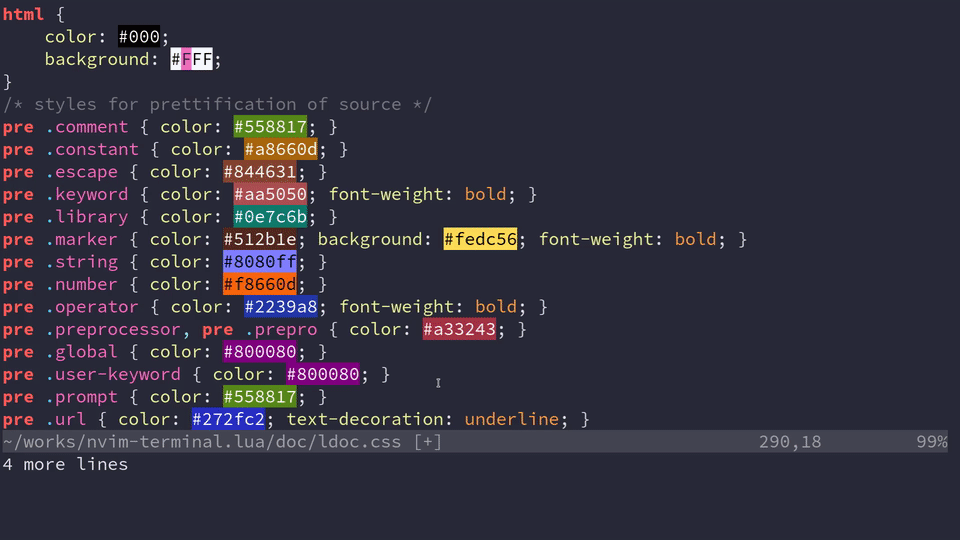colorizer.lua
A high-performance color highlighter for Neovim which has no external dependencies! Written in performant Luajit.
Installation and Usage
Use your plugin manager or clone directly into your runtimepath.
Plug 'norcalli/nvim-colorizer.lua'As long as you have malloc() and free() on your system, this will work. Which includes Linux, OSX, and Windows.
One line setup. This will create an autocmd for FileType * to highlight every filetype.
lua require'colorizer'.setup()
Why another highlighter?
Mostly, RAW SPEED.
This has no external dependencies, which means you install it and it just works. Other colorizers typically were synchronous and slow, as well. Being written with performance in mind and leveraging the excellent LuaJIT and a handwritten parser, updates can be done in real time. There are plugins such as hexokinase which have good performance, but it has some difficulty with becoming out of sync. The downside is that this only works for Neovim, and that will never change.
Additionally, having a Lua API that's available means users can use this as a library to do custom highlighting themselves.
Customization
The available highlight modes are foreground, background. The default is background.
Full options list:
no_names: Disable parsing names like "Blue"rgb_fn: Enable parsingrgb(...)functions.mode: Highlight mode. Valid options:foreground,background
For basic setup, you can use a command like the following.
-- Attaches to every FileType mode require 'colorizer'.setup() -- Attach to certain Filetypes, add special configuration for `html` -- Use `background` for everything else. require 'colorizer'.setup { 'css'; 'javascript'; html = { mode = 'foreground'; } } -- Use the `default_options` as the second parameter, which uses -- `foreground` for every mode. This is the inverse of the previous -- setup configuration. require 'colorizer'.setup({ 'css'; 'javascript'; html = { mode = 'background' }; }, { mode = 'foreground' }) -- Use the `default_options` as the second parameter, which uses -- `foreground` for every mode. This is the inverse of the previous -- setup configuration. require 'colorizer'.setup { '*'; -- Highlight all files, but customize some others. css = { rgb_fn = true; }; -- Enable parsing rgb(...) functions in css. html = { no_names = true; } -- Disable parsing "names" like Blue or Gray }
For lower level interface, see the LuaDocs for API details or use :h colorizer.lua once installed.
TODO
from Hacker News https://github.com/norcalli/nvim-colorizer.lua

No comments:
Post a Comment
Note: Only a member of this blog may post a comment.